Drum kit tour: Alter Bridge, Scott Phillips
The Alter Bridge drummer shows us around his setup, explains why you should overdub Zil-Bels, and how Mario Duplantier informed his crash cymbal choices
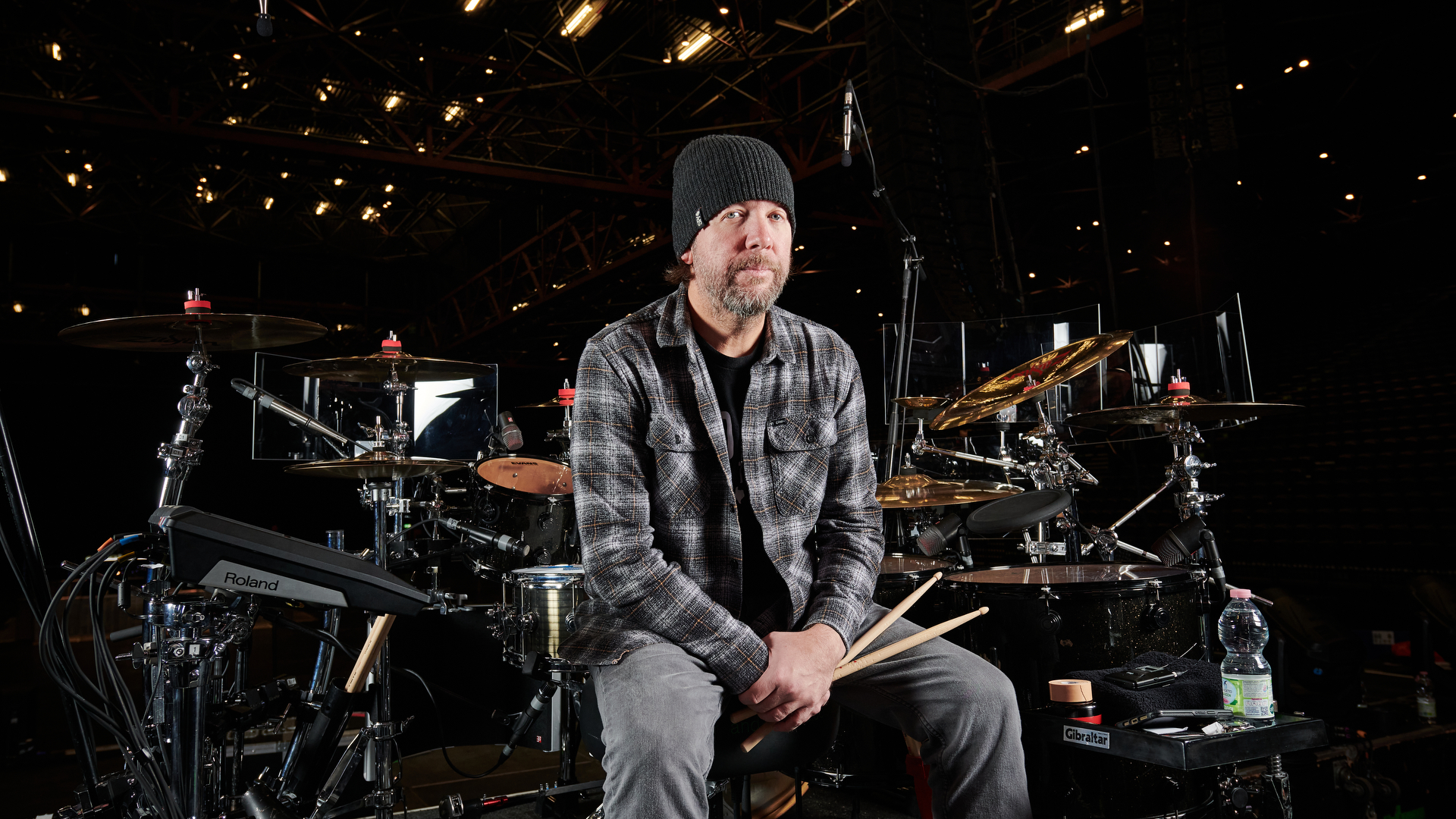
Alter Bridge drummer Scott Phillips has enjoyed nearly three decades touring the world and playing on some of the biggest stages it has to offer.
Here, Scott takes time out from soundcheck to give us some insight into the gear he uses to perform live, and why.
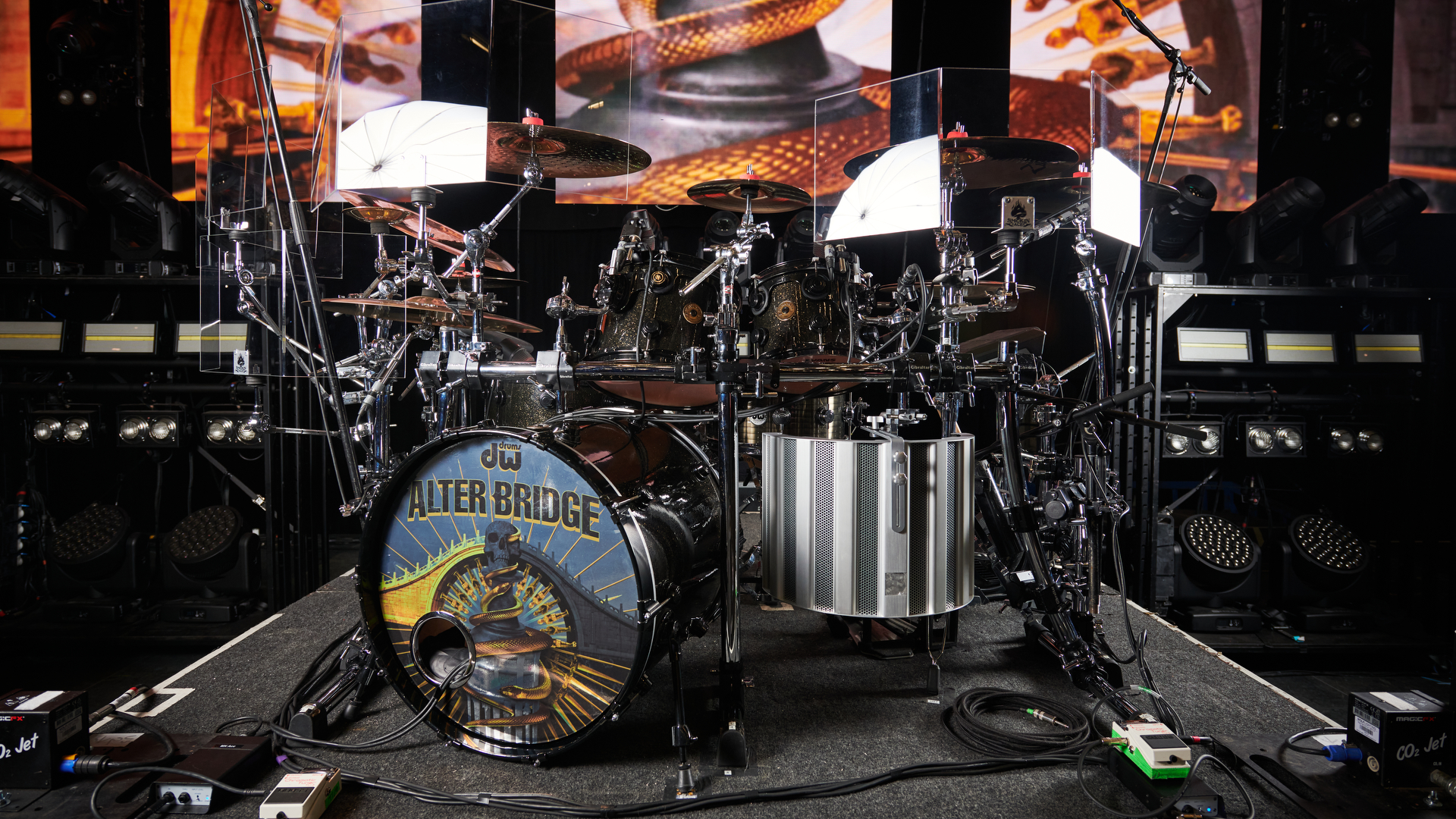
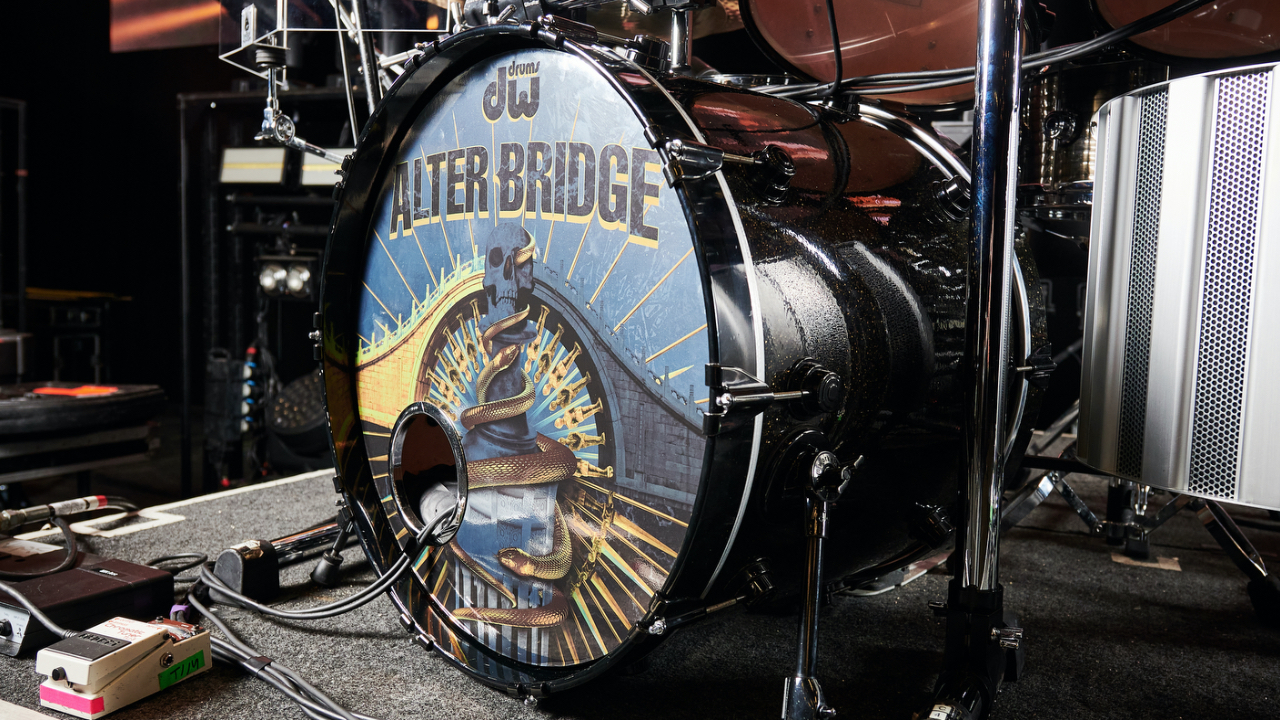
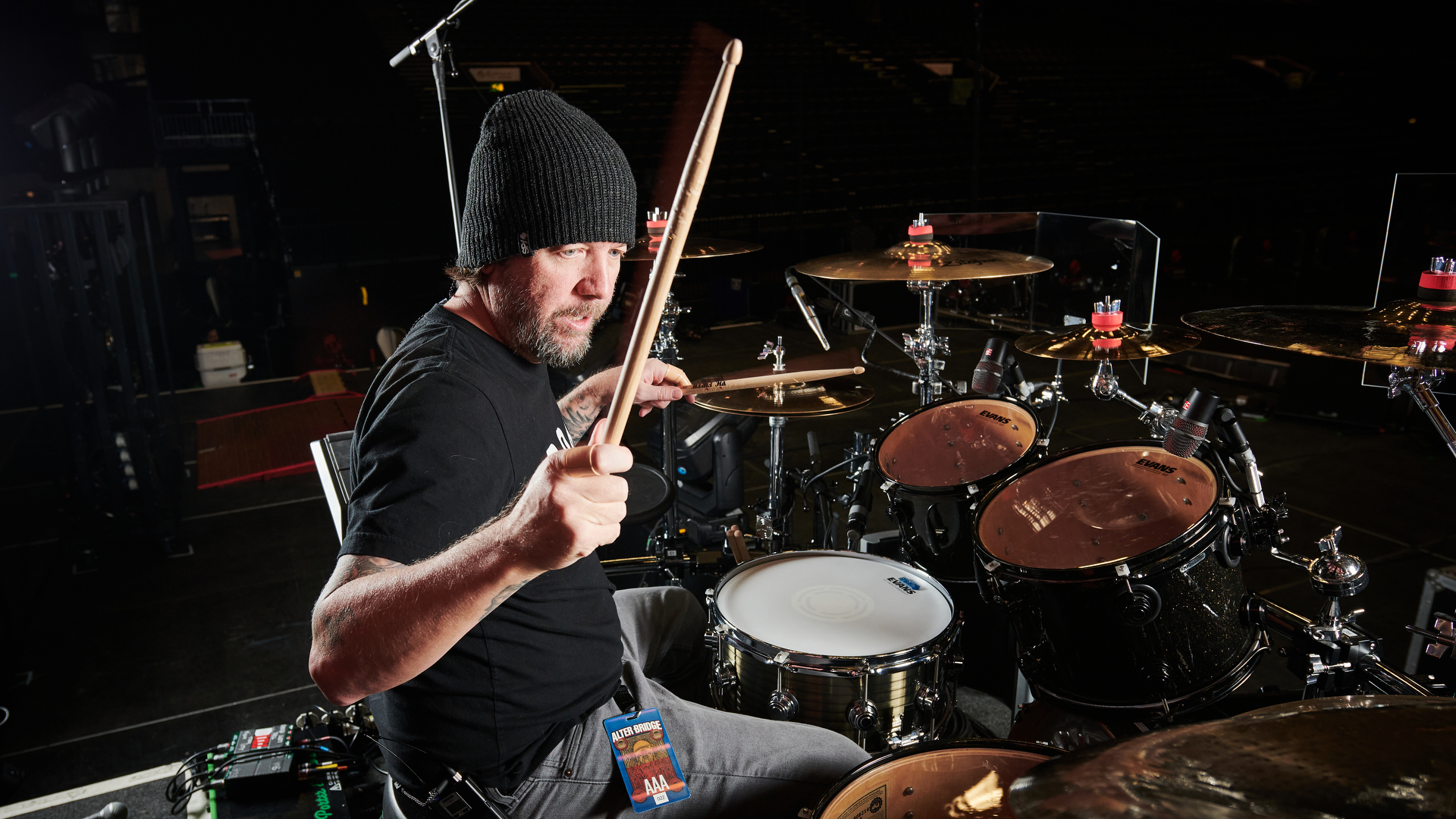
Drum shells: DW Jazz Series
Drum shells: DW Jazz Series
“I've been with DW now since 2009 and have been using the Jazz Series shells which are maple and gumwood. I had gone through some of their drums with my tech at the time, and we were looking at different shells.
"At that point in time, I tended to like the ones without the reinforcement rings, which the Collectors Series have. They sound phenomenal, but I'm just used to playing the ones without reinforcement rings, so we ended up picking the Jazz shells.
"My sizes are 10" and 12" rack toms and then 16" and 18" floor toms. The kick drum is a 22”x18”. There's just something about the Jazz Series shells. I’ve played the Collectors and a lot of DW's different toms and for whatever reason, the particular heads that I use on those shells just seems to work well. It's a really warm tone, but there's still plenty of attack as well, without it being overbearing.
"I definitely leave more of the tuning to my tech Eddy than myself. But, yeah, I think there's certain intervals that we look for between ‘tom one’ to ‘tom two’, and then to three and four to where there's plenty of separation between all four drums.
"But the 10” is not tuned super high. It's not sort of timbale-sounding. It's just a nice transition where when I’m playing fills you can really hear the definition between each of the toms, but they all live within the same octave or couple of octaves."
Want all the hottest music and gear news, reviews, deals, features and more, direct to your inbox? Sign up here.
Snare drum: DW Collectors Vintage Brass over Steel
Snare drum: DW Collectors Vintage Brass over Steel
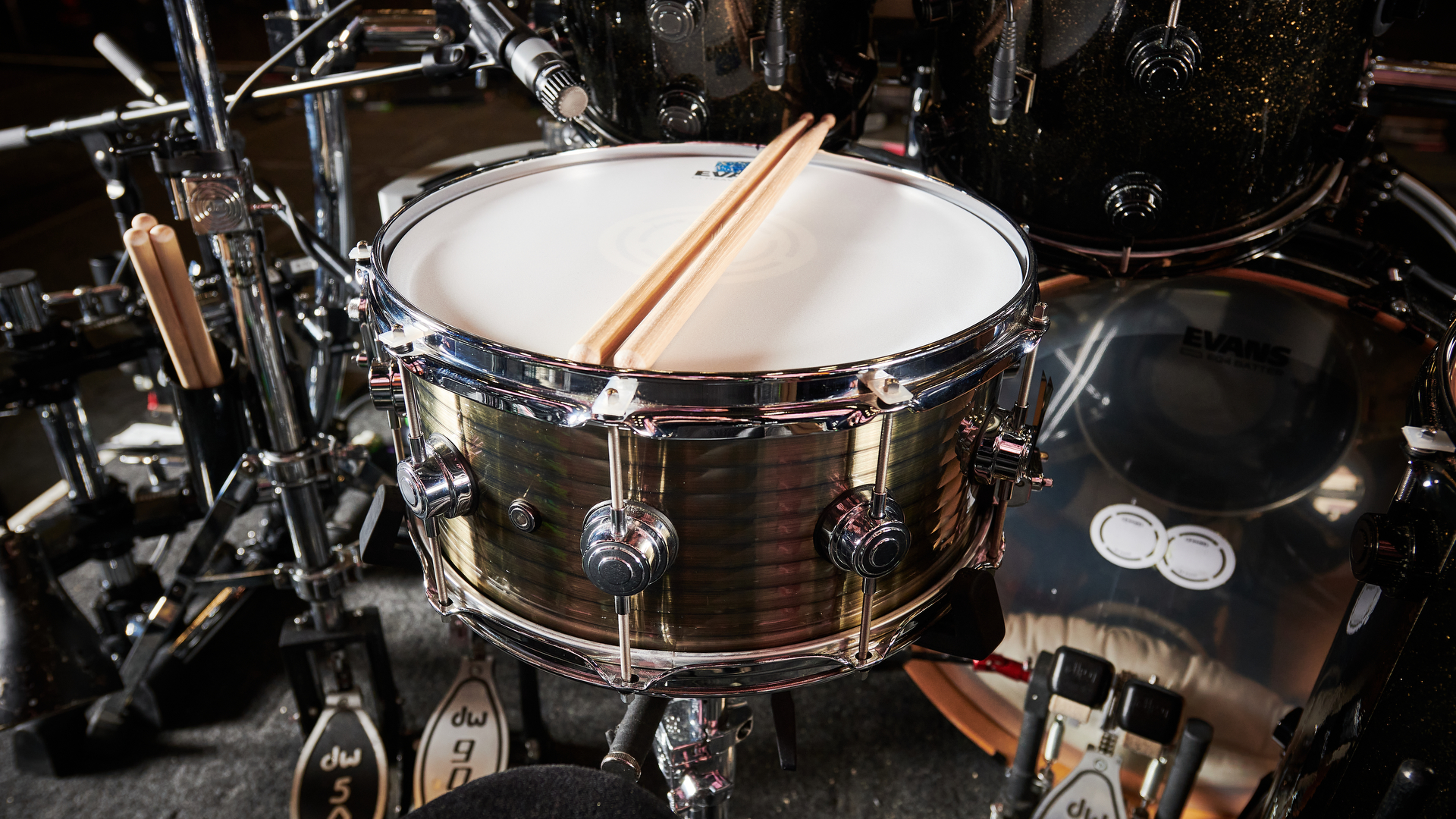
“My snare is a DW Collectors Vintage Brass over Steel. I guess it's sort of a brass finish over a steel shell - I'm not sure if it's just a finish or actual brass on the outer layer, but it was a snare that I had used when we were recording The Last Hero.
“We were in LA and I'd just picked up a loaner kit from DW while we were out there, and that was one of the snares they provided. I had some snares of my own that I was using and ended up putting that one up.
“In the room it just sounded like an absolute gun blast, it was phenomenal. Elvis [Baskette], our producer, was just like 'What snare is that?!' It weighs like, 30 lbs, it's very heavy and thick. I had never really played a steel snare before, to be honest, but this one just had some magic to it so I've been using it ever since.
“I've used a Black Beauty for years on-and-off for recordings and I still do use that and a couple of other snares that I've got, for recordings. But I find that this one, particularly in a live setting doing the larger rooms that we're playing in, just works right in the mix.”
In the room, it just sounded like an absolute gun blast…Elvis Baskette was like, 'What snare is that?!
Scott Phillips
Heads and tuning: Evans
Heads & Tuning: Evans
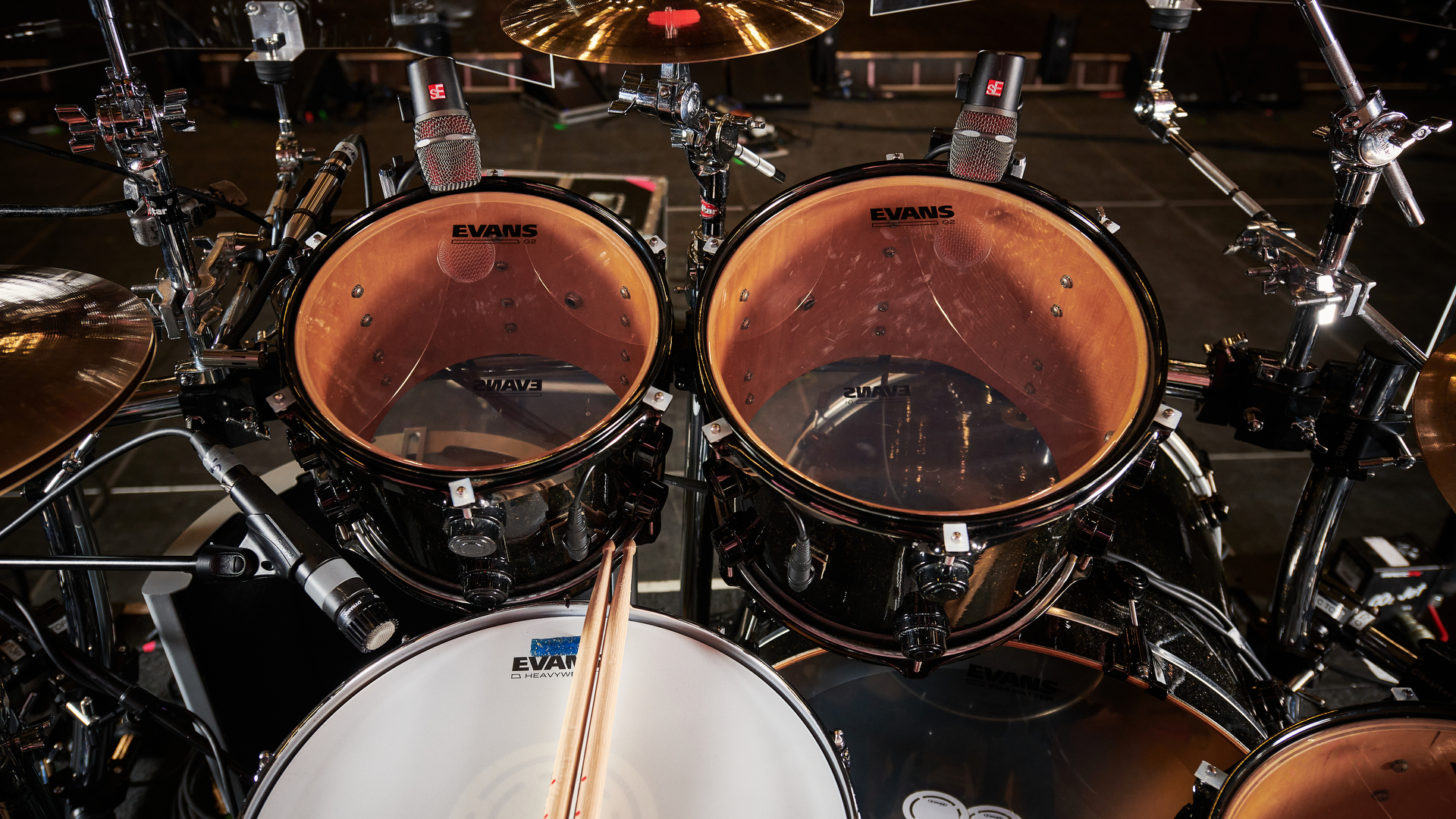
“I'm using the Evans G2 clears on the tops for all four toms, and then G1s on the bottom. I've used that combo, I think probably since about the day that I moved over to Evans, which had to be probably 1999 or 2000.
“I've tried some of their other Heavyweight tom heads in an effort to try and make them last a little bit longer on tour, and they make for a really great head. They're heavy and still keep their musical quality after four or five shows.
"But I think we found we got a little bit better resonance from the G2/G1 combo, so we'll change them about every three to four shows - once or twice a week depending on what our schedule is.
“I like to have a little bit of a pitch decay at the end of the note, that kind of thing where you get the attack, but then the resonant note is maybe a step or two lower. But there's no specific thing that I'm asking for or looking for when the heads get changed as far as tone.
"Eddy's been with me now for about six years, so he knows what he likes and what I like and he's very skilled at making sure the set is consistent from night to night.
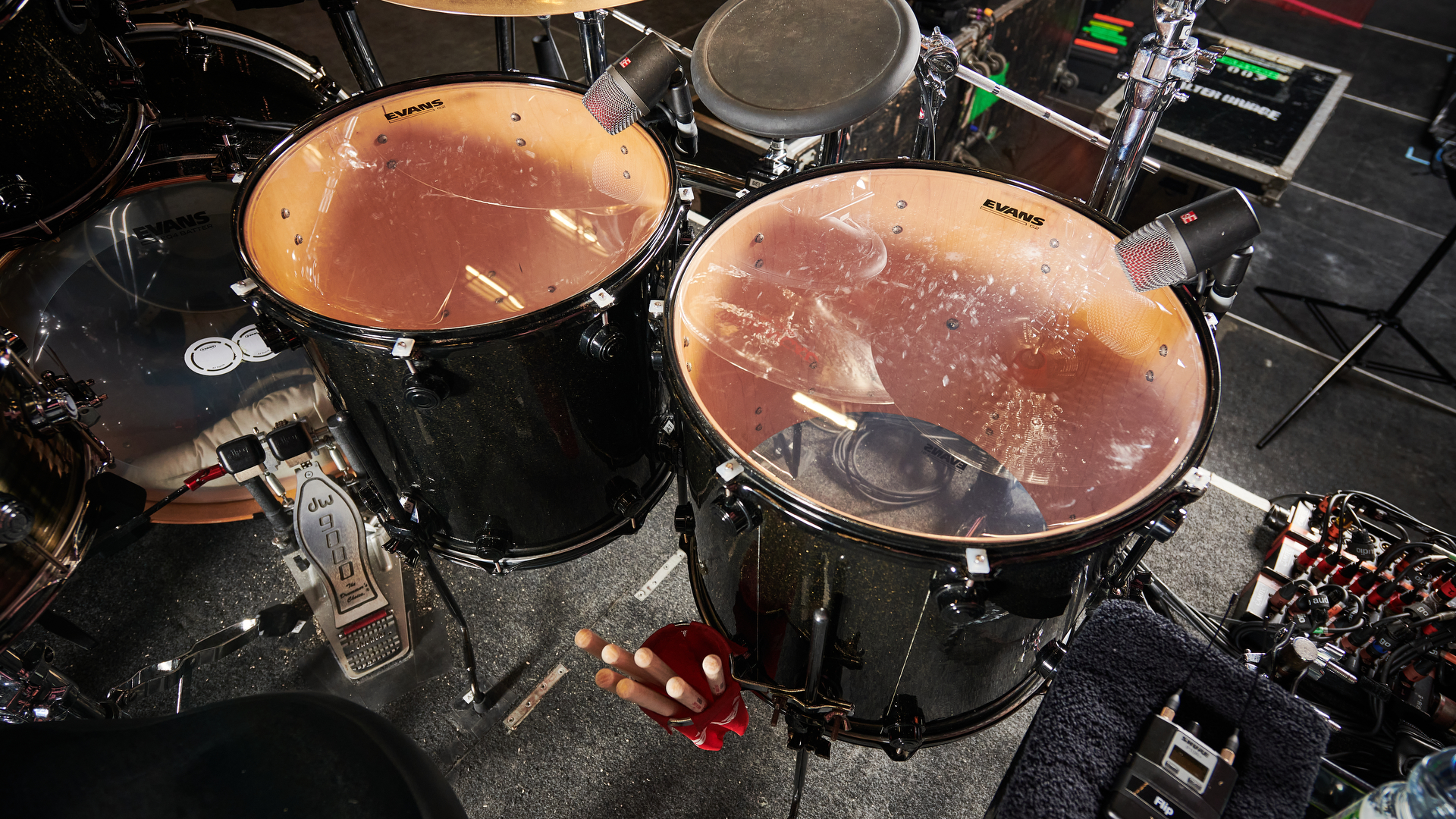
"It speaks to the quality of DW and their product, that the shells are very easy to tune and you can make them sound good without having to mask anything."
Scott Phillips
“I've never really used coated heads live. I love the tone of coated heads in the studio. But I think for the style of music that we make, I always found the clear heads to be the best choice in a live setting.
“They are completely open. There might be a small piece of gaff tape on one of the bottom heads of the floor toms to keep it from over-resonating. But other than that they're wide open, no gels or anything like that on the toms.
“We use a little bit of gel on the snare, right at the 12 o'clock position but not much. I've always found it better, and I think Eddy agrees with me that the best-sounding tom is the one that you can tune perfectly, and not the one that you have to mask with the gaff tape or gels or anything like that.
I think for me, it kind of speaks to the quality of DW and their product, that their shells are very easy to tune and you can make them sound good without having to mask anything."
“I like the crack of the snare to be mid to slightly upper range but not super cranked. I have it to where you can still feel the air movement within the shell itself and not choking the drum to death to try and get more attack out of it.
"I think we've got a pretty good blend of sort of upper/mid-range tuning and then the mid-range snare tension on the wires themselves. You get a lot of the ghost notes too where you can hear the natural tone of the drum."
Cymbals: Zildjian
Cymbals: Zildjian
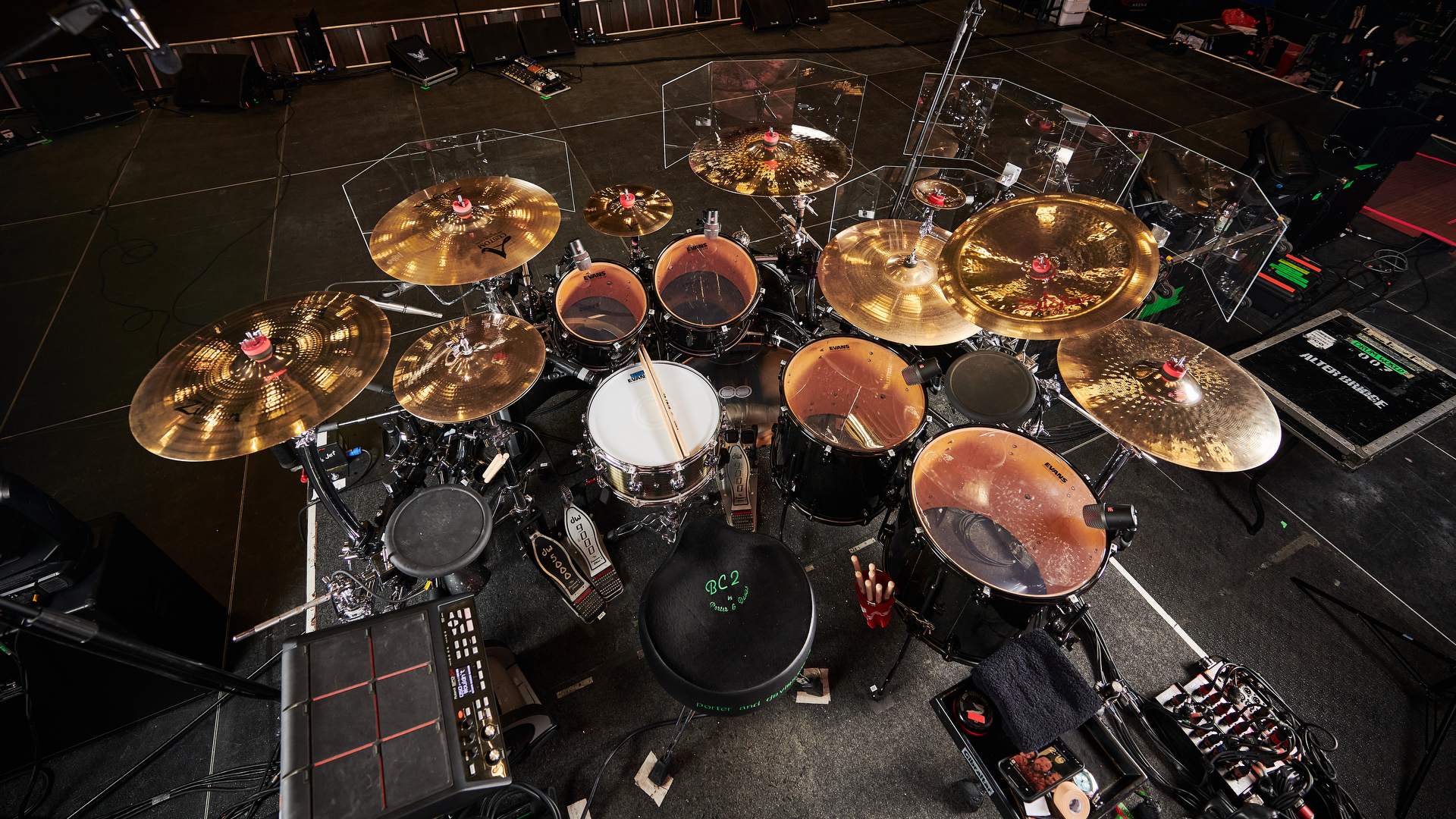
- Hi-Hat: Zildjian A Custom Mastersound top/A Quick Beat bottom
- Crashes: Zildjian 17” A Custom Projection Crash, Zildjian 18-inch A Custom Projection Crash, Zildjian 19” A Heavy Crash (or Projection Crash), Zildjian 18” A Heavy Crash (or Projection Crash)
- Ride: Zildjian 22" A Custom Ping Ride
- FX/other: Zildjian 6" Zil-Bel, Zildjian 10" A Custom Splash, Zildjian 20” Oriental China Trash
“I've been with Zildjian since day one. The first set of cymbals I ever bought were Zildjian. I was lucky enough a few years after that once we had gotten signed, I met a phenomenal photographer and sweetheart of the lady named Alyssa Wales who had taken some photos of us very early on and she introduced me to the guys from Zildjian. She really helped me a lot to get those endorsements and I've been with Zildjian ever since. So I'm very, very happy with that.
“But as far as my cymbal setup goes, I'll start with the hi-hat. The top is an A Custom Mastersound, then the bottom is an A series Quick Beat. That's a combo that I've played for a really long time now.
“I'd seen in different drum magazines that certain players who I really looked at two were using sort of a combination hi-hat style and I was like, 'Well, I'll try that.' I just love that sound.
"You can get a really great tightness with those, where the air sort of escapes through the four holes in the bottom. But then when you open it up, it's got a really good sort of mid-range slosh to it.
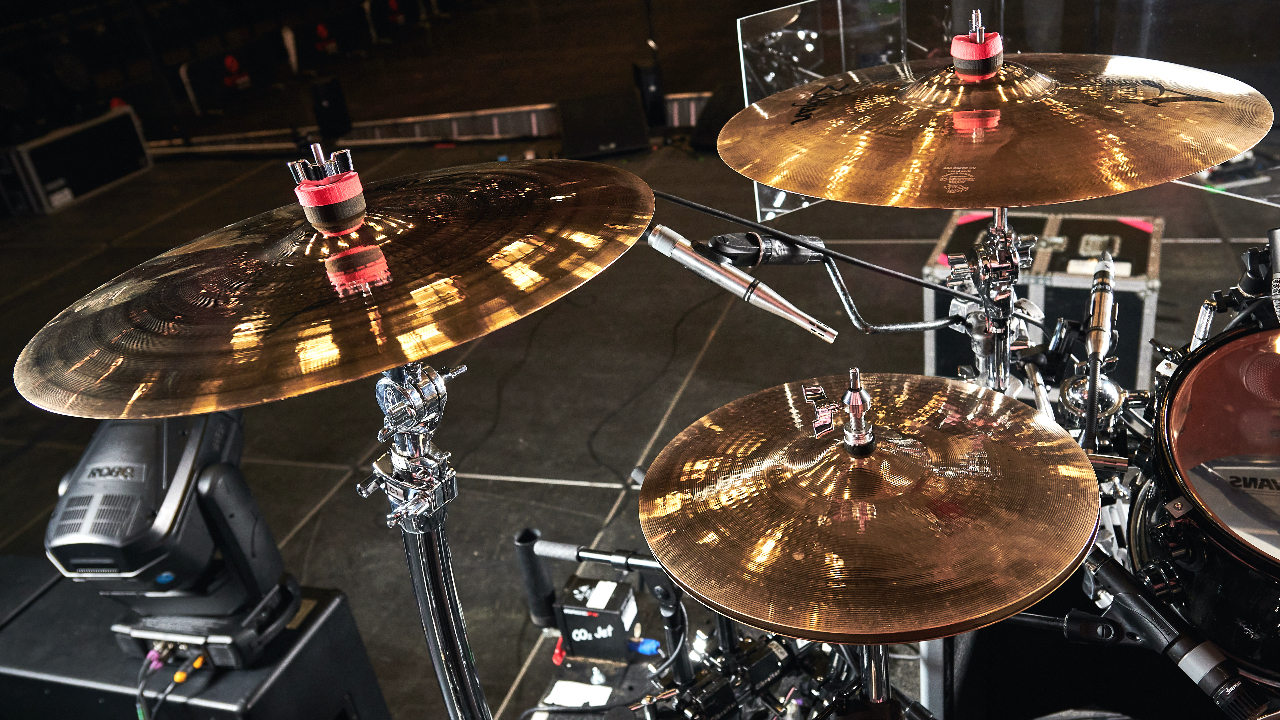
“From there on my far left is a 17” A Custom Projection Crash, then towards the centre I've got an 18-inch A Custom Projection Crash, and moving over to dead centre I've got a 10” A Custom Splash.
“Starting at about my one o'clock position there's a 19” A Heavy Crash. On the last couple of tours and for most of this tour I was using a 19” Projection Crash in that spot, but I broke it about a week ago and the A Heavy was my backup.
“I used the A Heavies for a lot of my career. They sound really good, they're very loud, but they're also super durable. They would hold up forever, but we were having a lot of stage volume issues with Myles and the level that he's got his mic set to.
“You know, some rooms are smaller, some rooms are bigger. We had done some touring with Gojira, they were out with us on our 2016 European run. I was looking at Mario and his cymbals sounded fantastic.
"Mario's a heavy hitter, and I saw that he was playing Projection Crashes. I'm like, 'Well if they work for Mario, I don't hit as hard as him, I should be able to make the switch.'
“The Projection Crashes are still loud, but they're not nearly as loud as those A Heavies are. So I switched everything over to Projection Crashes. We try to make sure that they're still in the same family, sound-wise, but I definitely want the 17" to sound different to the 18". I use the 19” as a crash, but also a lot as a crash/ride.
"So I tend to like it lower in pitch, just so doesn't get too obnoxious in the mix. If you're sitting there, hammering away on it, and it's, you know, higher in pitch, I feel like it eats into the mix too much. So something that's lower and sits outside of the vocal frequencies seems to work really well.
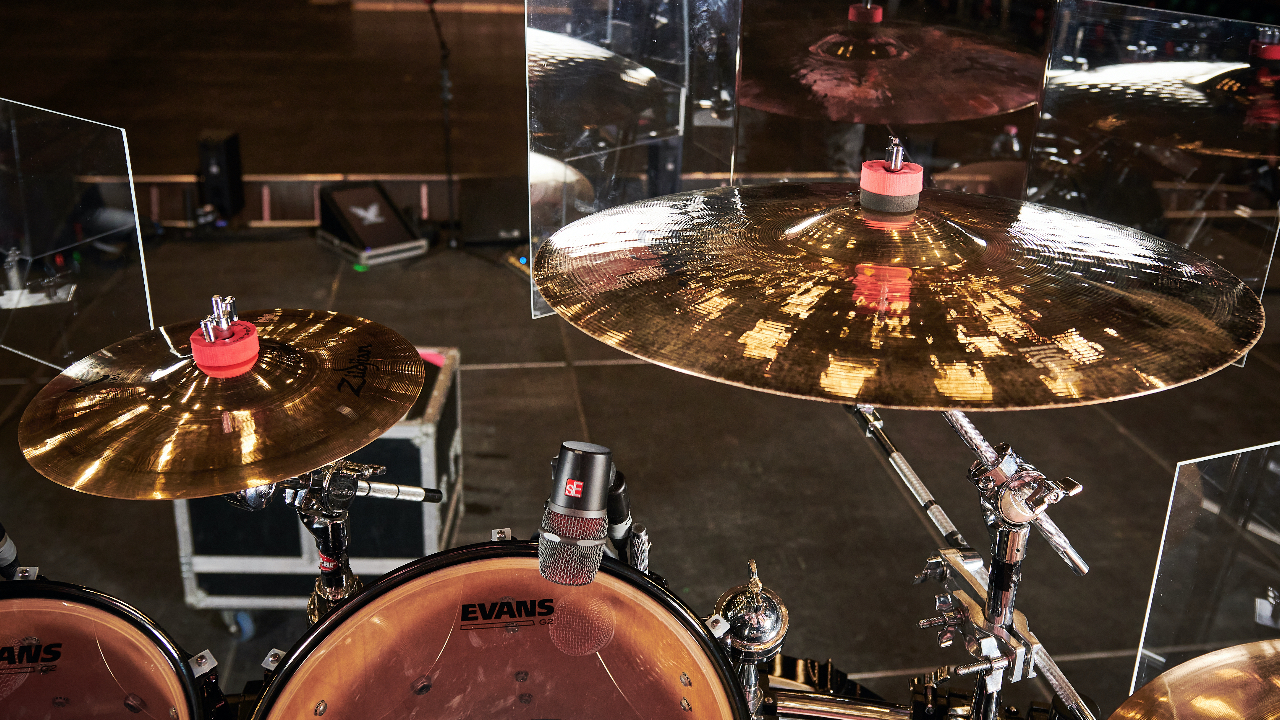
The Zildjian A Custom Ping Ride is a cymbal that I've always used, and will probably continue to always use.
Scott Phillips
“I've used a 16"/17"/19"/18" configuration before, but I always found the 16" just didn't quite cut through as much. I've done it where it was 18"/18"/20"/18" and there just wasn't enough of a separation between everything.
"Even two 18” cymbals that are identical models, but completely different in pitch, once you really start laying into them they can start sounding too similar. So we decided to find some things that voice a little bit different, but not too drastically different.
"My ride cymbal is a 22-inch, A Custom Ping Ride. I've used that - not that actual one - but I have used an A Custom Ping Ride since day one. I've never switched, I love the way it sounds.
“If you lay into it, it will sing, it will resonate. But for the most part that 'ping' really cuts through. I love the way the bell sounds on it, and I tend to do a fair amount of bell work here and there. So, it's a cymbal that I've always used and will probably continue to always use.
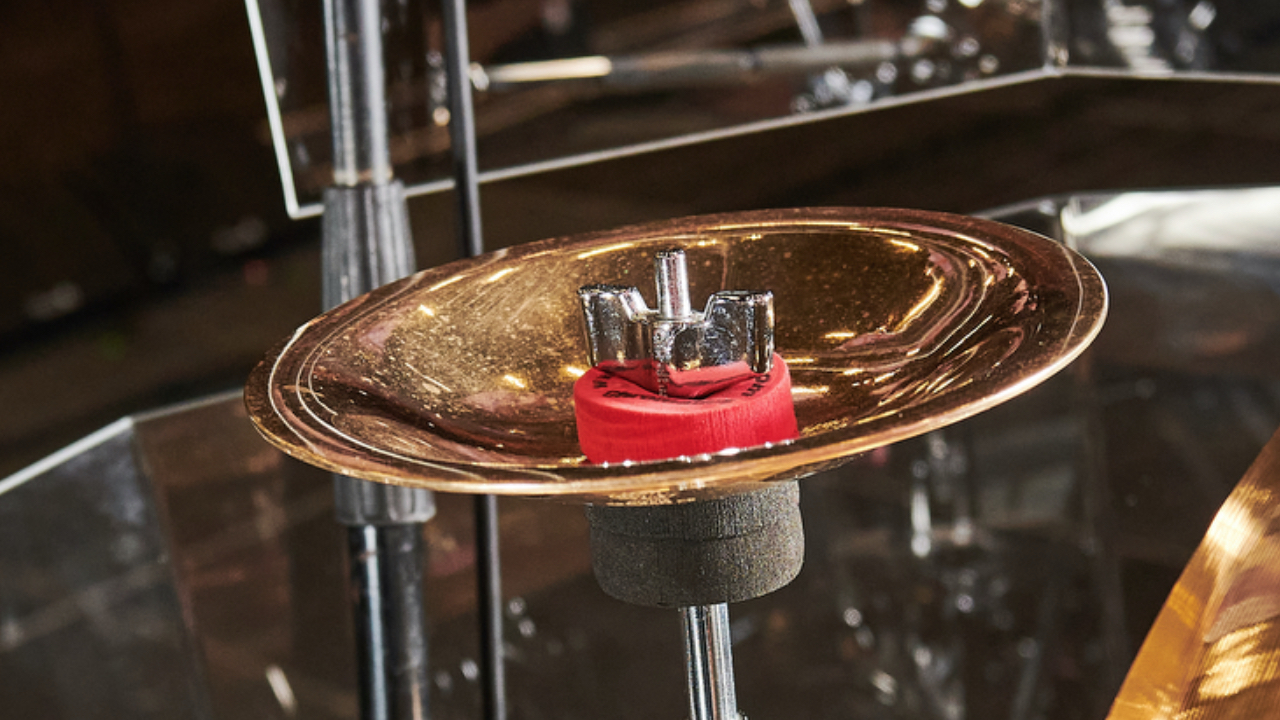
“Right above the ride is a 6” Zil-Bel that I use sparingly, maybe two or three times a night just for a different sort of bell sound compared to the ride. They can 'ping' on for a really long time, but I don't mute it. I remember in recording sessions in the past I would have to go in and overdub it, because it would literally decay for almost, like, 60 seconds.
“It will ring forever! When I was using it during actual takes where they were going to be comped together, there'd be times where maybe I didn't hit the bell on one take, but did on the next. [The engineer] would be like, 'Don't hit the Zil-Bel! Just know when you're gonna hit it and then we'll overdub it in later so we don't have to worry about the decay!’ because it was ringing for so long.
“In a live setting it's it doesn't matter nearly as much with a nice roar from the crowd and loud electric guitars and bass and all that stuff. and decay that's within the room. But in the studio, we've definitely had to do some some trickery.”
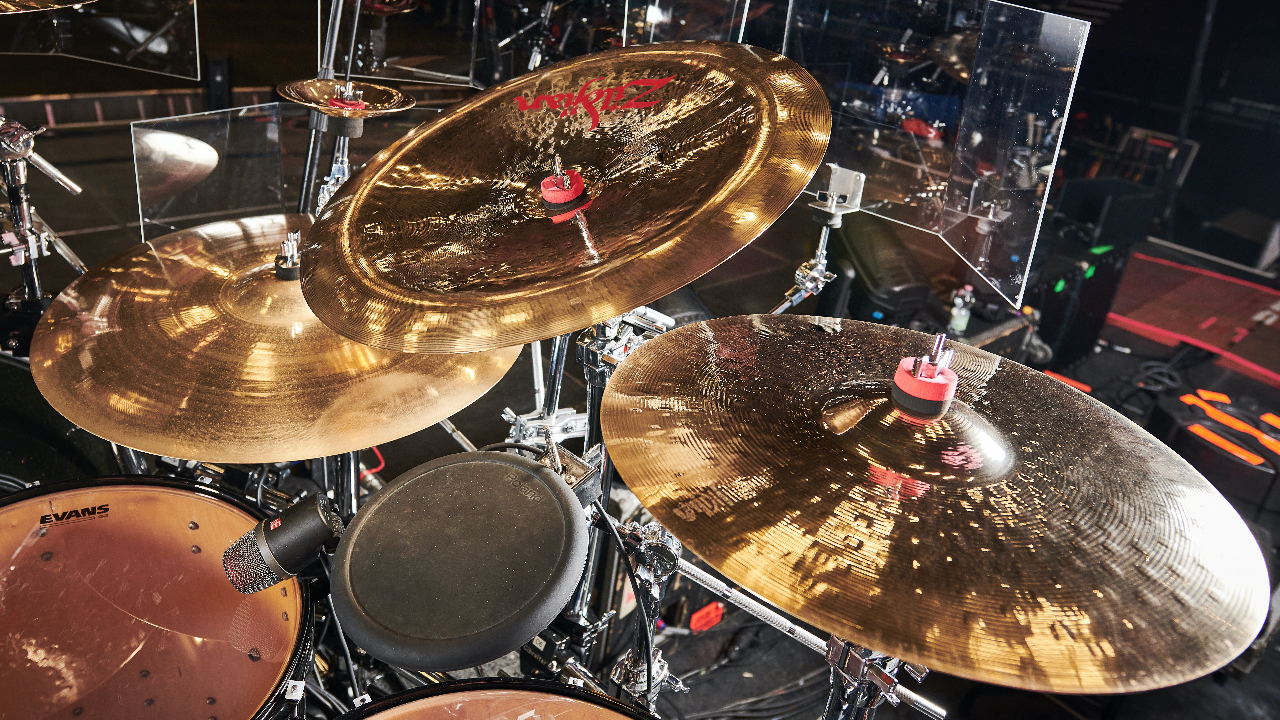
“Then moving to my three o'clock, I've got a 20” Oriental China Trash, which I've used forever. I used an 18” earlier in my career, and I tend to overplay the China a lot. So I wanted to find something a little bit deeper in pitch that didn't quite stand out so much.
“My last cymbal on my right is an 18” A Heavy Crash, which again, would normally be an A Custom Projection. A lot of these shows have been arena-size so the stage volume doesn't matter nearly as much because you're in a big wide open room.
“There's plenty of depth and space between you and the rest of the mics. We still have some plexiglass up, They’re made by Smokin Ace and they’re smaller plexies that sort of sit right around the cymbal itself, but don't completely block the view of the kit. They just keep the cymbals out of the vocal mics as much as possible.
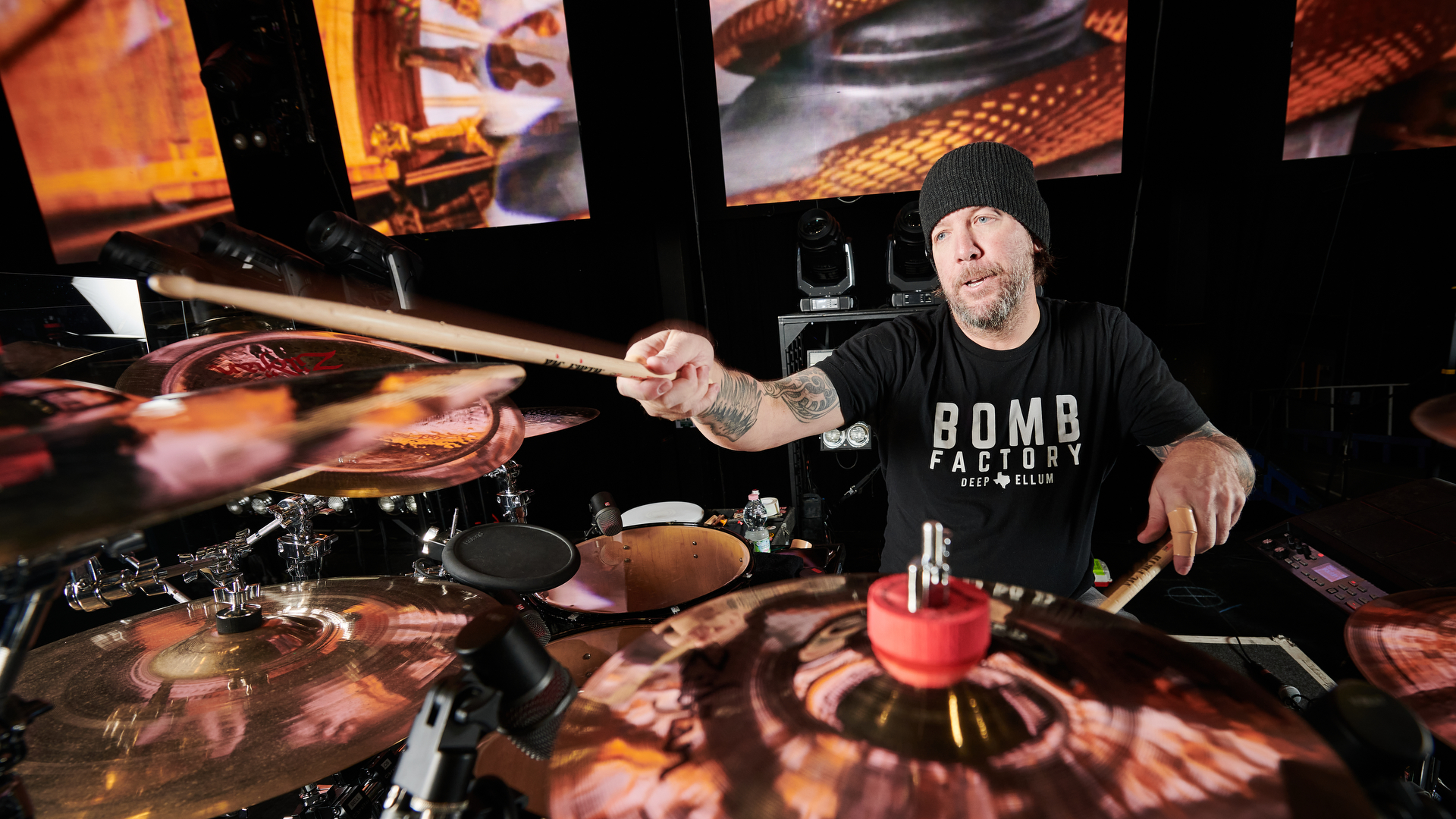
Electronics: Roland SPD-SX
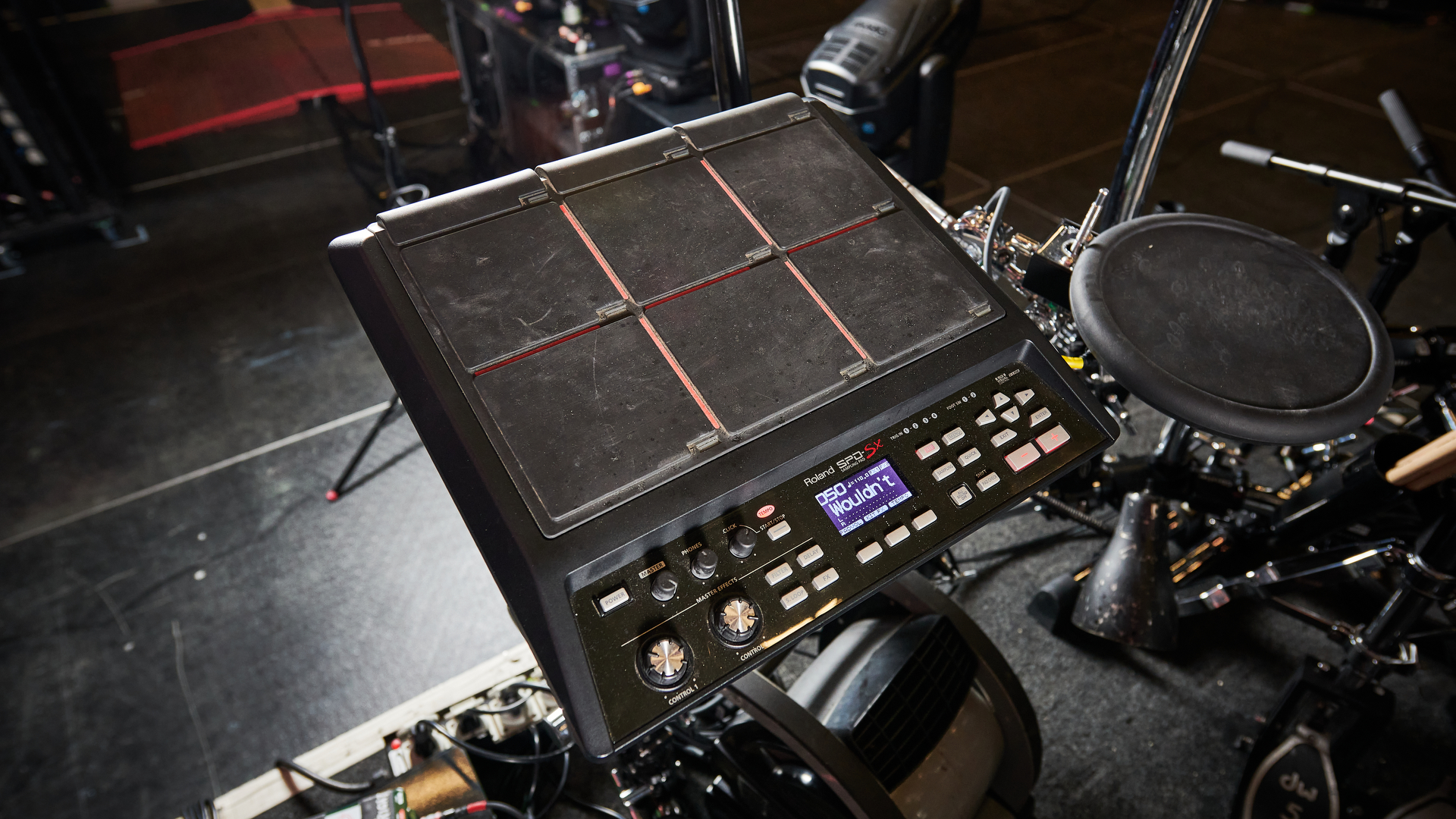
“I'm using a Roland SPD-SX as a brain and then I've got two PD-8 pads that I essentially use as 808 triggers. The one on my left by the hi-hat is strictly for 808 sounds, and then there's one on the right that sits between the two floor toms.
“I use that on a song called Slip to the Void that's got this keyboard outro. It sort of fades out and then there's one other song - Come to Life has the same sort of triggered outro. We're not currently playing it on this tour but we played it a tonne in the past.
“[The rubber pads] are all I've really kind of used since we started using the electronics. I've got the sensitivity basically turned off. So if I hit it really soft or really hard, it's still a loud 808 sound at a consistent volume.
“I'm not doing anything really percussive on it. It's single shots, two times per-song, every third or fourth song. That kind of thing. It's not like I need it to respond like a drum, so the rubber works fine for how I use it."
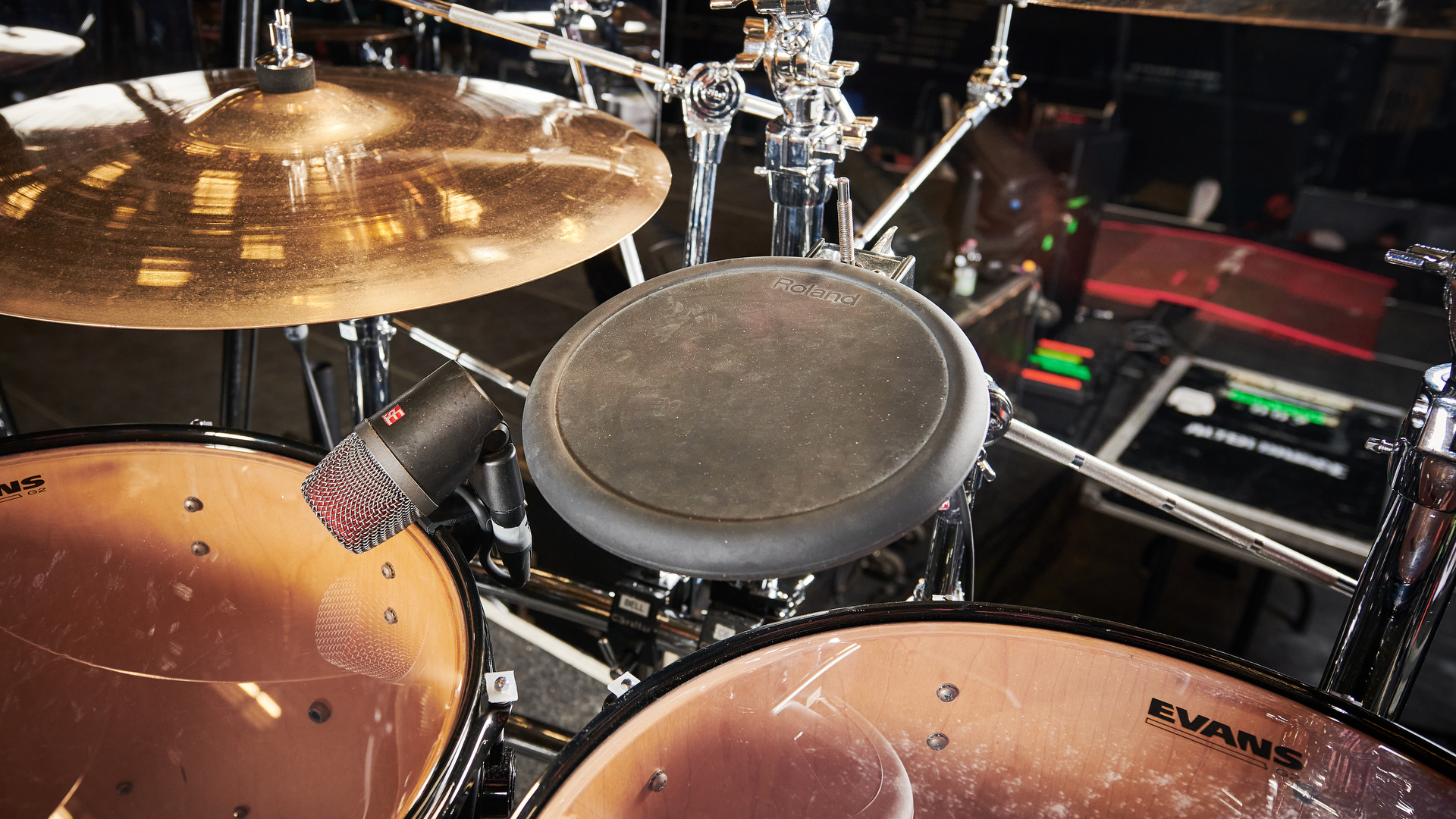
“Those are the only times I really use those pads, then the brain itself is strictly for click tracks and there's a couple of samples. The last album (Walk the Sky) had some some keyboard-heavy parts so we went through after-the-fact and decided 'Well, this would be cool to have/We don't need to use this or we don't even use that…'
“I'll go through and sort of cue everything up in Logic, especially for songs that we want to have on the click, but their tempo mapped because there's a time signature change or tempo changes that I can't manually do on the fly. So I'll go ahead and pre-program that ahead of time. Then I just load it into the brain, link the pads that need to be linked, hit the trigger and we're off to the races."
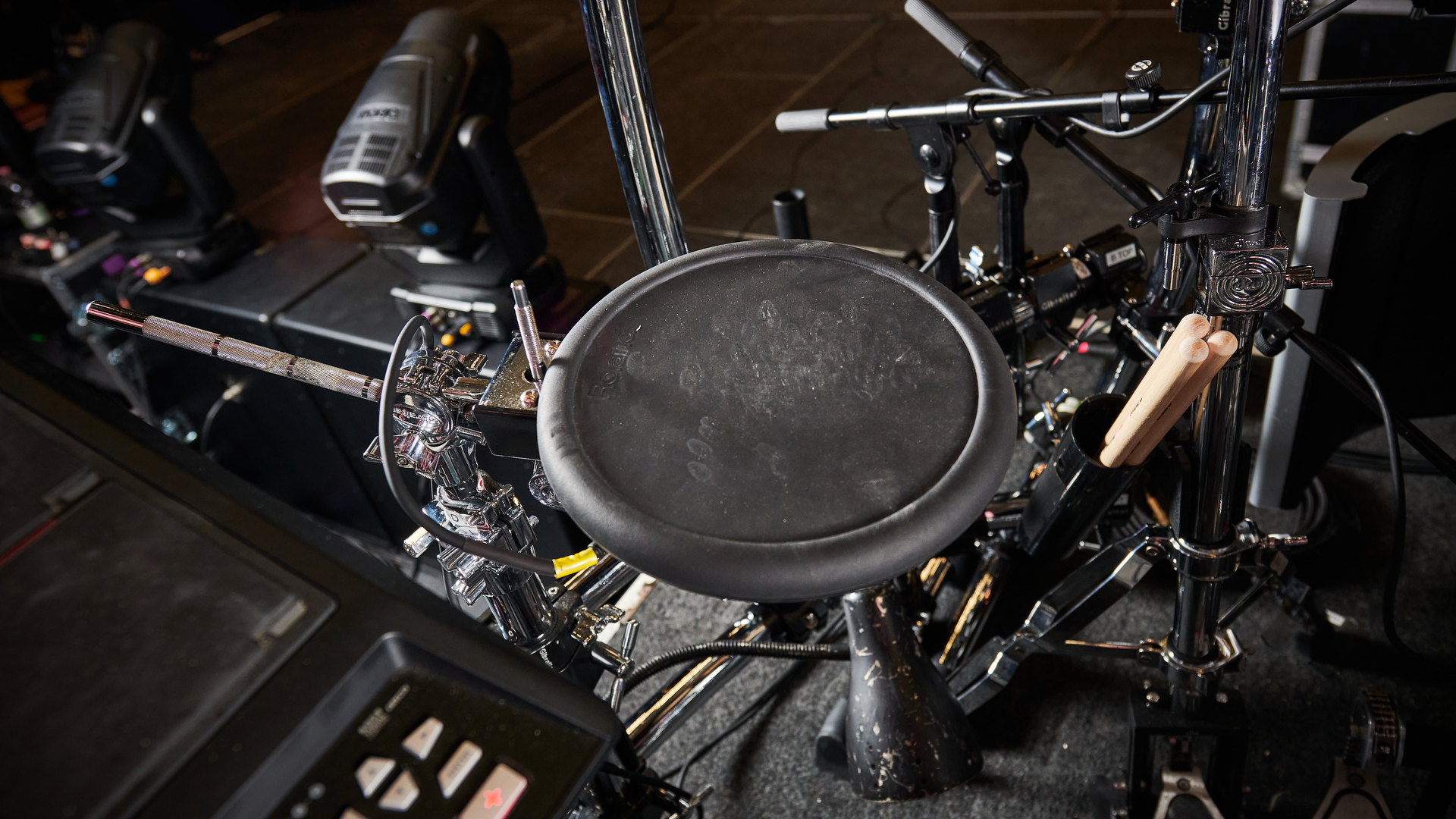
With the BC2, you don't need a tonne of subs behind you anymore. It's all in the seat.
Scott Phillips
Sticks & Hardware
Porter & Davies BC2
“I'm using a Porter & Davies BC2 throne. I came across them a few years ago when my drum throne didn't get shipped over here with the rest of the kit. I had to borrow Barry Kerch from Shinedown's throne for the first couple of gigs.
“We were in the UK and somebody had recommended Porter & Davies. I used to have a Roc N Soc style throne with one of those giant butt thumpers on the bottom of it. It weighed about 80lbs! Porter and Davies happened to be very close to where one of our shows were so we called them up, got one sent out, and I love it.
“It's a comfortable seat first of all, but the driver in it's great, the amplification included with it has been super reliable. It doesn't weigh 100lbs, it's still sort of the weight of the normal seat. So I've been very thankful to come across them.
“It really is [a revelation], it makes a huge difference. When it comes to thinking about touring in general, the amount of trailer space or truck space or whatever you're taking up.
"You don't need a tonne of subs behind you anymore. It's all in the seat. I get just as much response from the kick drum, bass guitar, 808 and the lower toms - that's what I have in my running through it - as four 18" subs behind you. It just it makes total sense.”
Sticks: Vic Firth Exteme 5B
"Vic Firth Extreme 5Bs are the sticks that I use. I've been with Vic Firth now for over 20 years, and they are just a fantastic company. I've used different sticks through my career and for me, personally, I've just found that Vic Firth is the most reliable and consistent.
"They do a great job with the manufacturing process and, all the heating and treating and that kind of stuff. I've never had a stick that weighs different to the other, and it's rare that I have one that splits. Normally if I'm discarding a stick, it's just because I've whittled through it over the course of the show."
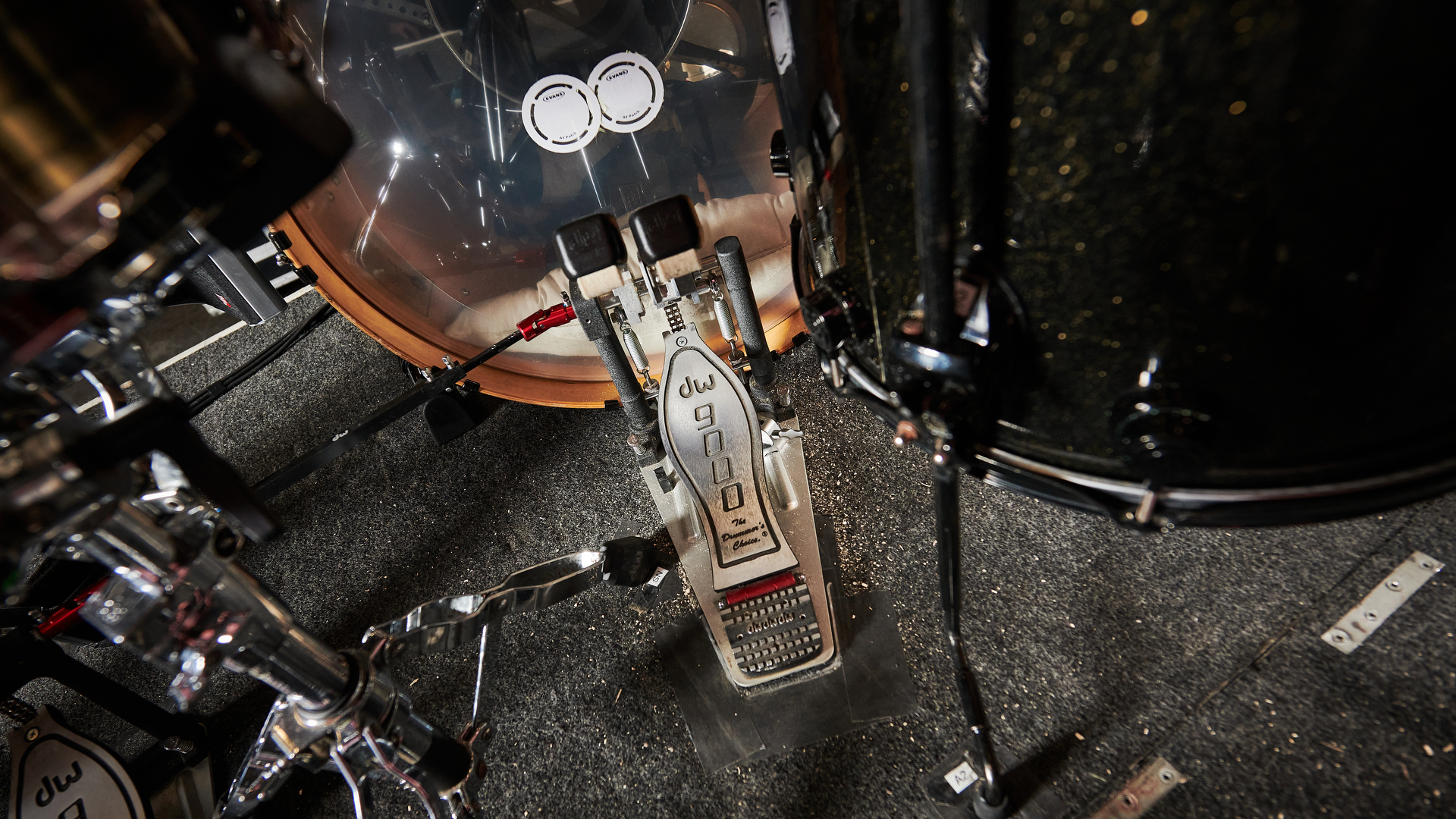
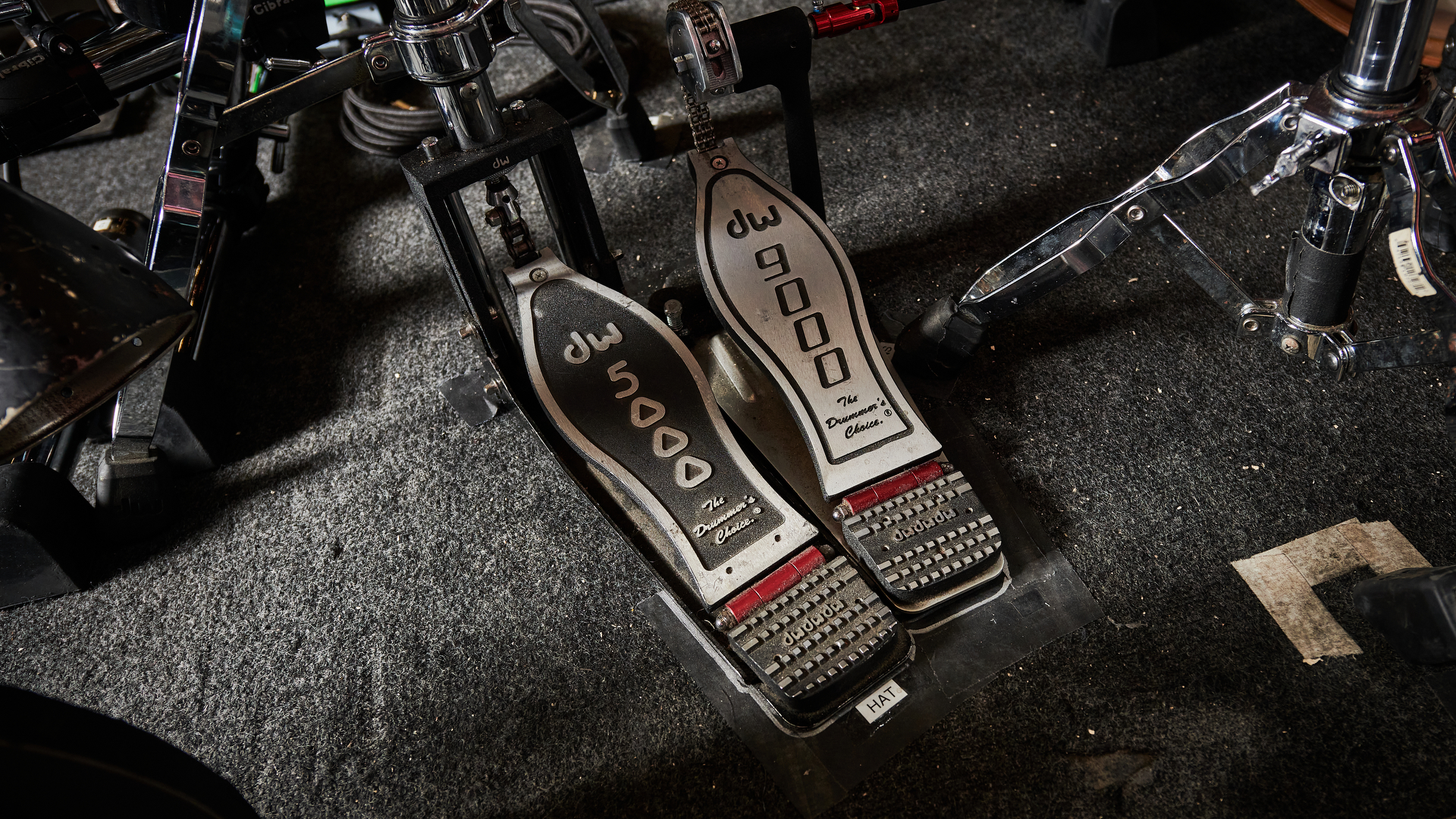
Hardware - DW/Gibraltar
"For my hardware, I use the DW 9000 - or rather the 9002, the double pedal - and I normally use a 9000 hi-hat stand. On this particular tour, I've got a 5000. Then all of my cymbal stands and rack system is Gibraltar.
"I've been with them for about 25 years now. The very first kit I ever bought, I got a Gibraltar rack system to go with it and I've been with them ever since. They make great hardware, I went through and sort of designed this rack myself.
"A couple of the cymbal stands are actually curved rack tubes that I modified to turn into cymbal stands, just to give it a little aesthetic from the from the audience perspective. But it's all they're rock solid. I've never had an issue with anything failing, knock on wood!”

Stuart has been working for guitar publications since 2008, beginning his career as Reviews Editor for Total Guitar before becoming Editor for six years. During this time, he and the team brought the magazine into the modern age with digital editions, a Youtube channel and the Apple chart-bothering Total Guitar Podcast. Stuart has also served as a freelance writer for Guitar World, Guitarist and MusicRadar reviewing hundreds of products spanning everything from acoustic guitars to valve amps, modelers and plugins. When not spouting his opinions on the best new gear, Stuart has been reminded on many occasions that the 'never meet your heroes' rule is entirely wrong, clocking-up interviews with the likes of Eddie Van Halen, Foo Fighters, Green Day and many, many more.